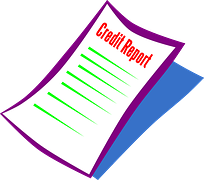Taking financial risks can be daunting, yet some of the most inspiring lessons come from those who dare to think differently. Creative risk-takers have a unique ability to turn uncertainty into opportunity, using innovation and vision to build lasting success. The story behind dan the automator a much better tomorrow perfectly illustrates how unconventional approaches can lead to remarkable outcomes, both artistically and financially. By examining how such individuals balance creativity with calculated risk, we can uncover valuable insights into managing money, seizing opportunities, and embracing change. This article explores the financial wisdom hidden in the bold choices of the world’s most inventive minds.
Embrace Calculated Risks
 Creative risk-takers are not reckless. They understand that every bold move involves uncertainty, but they also know that fear should not dictate decisions. In finance, this translates to taking calculated risks—investing wisely, diversifying assets, and understanding potential outcomes before committing. Playing it too safe can be just as limiting as taking on too much risk. When an artist experiments with a new medium or an entrepreneur launches an unconventional product, they do so with preparation and intent. The same principle applies to investing or career moves. Do your research, plan your steps, and then leap. Growth often starts on the edge of discomfort, where hesitation meets opportunity.
Creative risk-takers are not reckless. They understand that every bold move involves uncertainty, but they also know that fear should not dictate decisions. In finance, this translates to taking calculated risks—investing wisely, diversifying assets, and understanding potential outcomes before committing. Playing it too safe can be just as limiting as taking on too much risk. When an artist experiments with a new medium or an entrepreneur launches an unconventional product, they do so with preparation and intent. The same principle applies to investing or career moves. Do your research, plan your steps, and then leap. Growth often starts on the edge of discomfort, where hesitation meets opportunity.
Value Creativity as Much as Consistency
Financial success is often tied to consistency, but creativity keeps progress alive. Creative thinkers constantly look for new ways to improve their craft, and that innovative mindset can transform how we handle money. It encourages flexibility, problem-solving, and the ability to adapt when circumstances change. Imagine approaching your budget the way a designer approaches a blank canvas. You assess, adjust, and refine until the result feels balanced. Creativity in finance is not about risk for the sake of excitement—it is about finding smarter, more efficient ways to reach your goals. Thinking creatively about money allows you to spot hidden opportunities others might overlook.
Learn from Setbacks, Do Not Fear Them

Every creative risk-taker has failed at some point, and that resilience is what sets them apart. They treat mistakes as feedback, not outcomes. In finance, setbacks might look like poor investments, unexpected expenses, or missed opportunities. Instead of quitting, learn from what went wrong and adapt. Financial growth, much like creative growth, comes from experimenting, reflecting, and trying again. By shifting your perspective from loss to learning, you build emotional strength and better decision-making skills. Over time, that mindset creates a safety net of experience more valuable than any short-term win.
Balance Passion with Practicality
Creative individuals often chase their passions, but they also understand the importance of structure. They budget for materials, plan timelines, and track progress. The same approach benefits anyone aiming for financial stability. Passion keeps you motivated, but practicality ensures you stay grounded. Set goals that inspire you yet remain achievable. Allocate funds not just for essentials but also for experiences that enrich your life. Like an artist balancing color and composition, financial harmony comes from …






 Interest rates may take center stage, but hidden fees linger in the wings, waiting to make their entrance. Origination fees, late payment charges, and annual fees can quietly accumulate, adding an unexpected layer to the cost of borrowing. It’s like attending a concert and discovering extra charges for the ticket, the program, and even the encore. Understanding and anticipating these fees is crucial for a true financial overture.
Interest rates may take center stage, but hidden fees linger in the wings, waiting to make their entrance. Origination fees, late payment charges, and annual fees can quietly accumulate, adding an unexpected layer to the cost of borrowing. It’s like attending a concert and discovering extra charges for the ticket, the program, and even the encore. Understanding and anticipating these fees is crucial for a true financial overture. As the final notes of our exploration echo, it’s clear that the true cost of debt extends beyond interest rates. Unveiling the hidden
As the final notes of our exploration echo, it’s clear that the true cost of debt extends beyond interest rates. Unveiling the hidden 



 Many people do not save. The idea of saving a part of their money never closes their mind, and that is very dangerous. For one to become rich, the habit of saving must be within them. The good thing is that cultivating the practice of saving is never a complex task. All that you need to do is to treat saving as a part of your expense. Just open a fixed account without your favorite bank and decide on the amount that you will be deposited each month.
Many people do not save. The idea of saving a part of their money never closes their mind, and that is very dangerous. For one to become rich, the habit of saving must be within them. The good thing is that cultivating the practice of saving is never a complex task. All that you need to do is to treat saving as a part of your expense. Just open a fixed account without your favorite bank and decide on the amount that you will be deposited each month.

 Before you move into your new house, ensure you have it thoroughly cleaned and that everything is working correctly. This will ensure that you can live comfortably and not have to worry about any repairs or too much cleaning after you move in.
Before you move into your new house, ensure you have it thoroughly cleaned and that everything is working correctly. This will ensure that you can live comfortably and not have to worry about any repairs or too much cleaning after you move in.


 The company you choose should have an affordable service. The payroll firm you choose should pay your employees in a timely manner and do the filing on time. The pricing will depend on the number of employees in your company. You need to know how much the payroll service will charge. You should make sure that the service offered will meet your needs. Therefore, do not just make a choice based on the price alone. You have to put your employee first when choosing a payroll service.
The company you choose should have an affordable service. The payroll firm you choose should pay your employees in a timely manner and do the filing on time. The pricing will depend on the number of employees in your company. You need to know how much the payroll service will charge. You should make sure that the service offered will meet your needs. Therefore, do not just make a choice based on the price alone. You have to put your employee first when choosing a payroll service. Time is of the importance when it comes to payroll. Paying your employees late can make them not to perform as required. Therefore, the company you choose should have a fast turnaround on paying employees. Therefore, make sure that you choose a company that can deliver quality services on time. There is no need to hire a company that spends a lot of days without making payments to your employees…
Time is of the importance when it comes to payroll. Paying your employees late can make them not to perform as required. Therefore, the company you choose should have a fast turnaround on paying employees. Therefore, make sure that you choose a company that can deliver quality services on time. There is no need to hire a company that spends a lot of days without making payments to your employees…

 At first, the decision to claim PPI on your own might seem lucrative. This is mainly because it is free and you receive the full amount once your application is complete. However, the process might not turn out to be successful due to the lack of expertise in handling these claims. The other downside is the lack of a contact point to let you know about the progress of your application.
At first, the decision to claim PPI on your own might seem lucrative. This is mainly because it is free and you receive the full amount once your application is complete. However, the process might not turn out to be successful due to the lack of expertise in handling these claims. The other downside is the lack of a contact point to let you know about the progress of your application.
 If your business is caught up in bad credit, then getting a loan from banks and other financing institutions could be a daunting task. In fact, most of them will lock you out. However reputable merchant lenders have this service and will not use your credit history to lock you out. Furthermore, they will not ask for collateral. The only condition businesses will have to borrow at high rates to compensate for the risk taken by the lender.
If your business is caught up in bad credit, then getting a loan from banks and other financing institutions could be a daunting task. In fact, most of them will lock you out. However reputable merchant lenders have this service and will not use your credit history to lock you out. Furthermore, they will not ask for collateral. The only condition businesses will have to borrow at high rates to compensate for the risk taken by the lender.

 For starters, a medical or bioscience advisor must have a sound background in general medicine. Some of the most successful life science advisors are not just experts, who have extensive marketing media background, but also former doctors and Life science graduates, as well. Possessing the knowledge of the human anatomy and systems is necessary to effectively promote a target brand.
For starters, a medical or bioscience advisor must have a sound background in general medicine. Some of the most successful life science advisors are not just experts, who have extensive marketing media background, but also former doctors and Life science graduates, as well. Possessing the knowledge of the human anatomy and systems is necessary to effectively promote a target brand. Medical and life science marketing requires individuals who are goal oriented. When taking into account the sheer number of medical products and services that are being introduced constantly, marketing a single brand or product is always a challenge. Therefore, an advisor or a team of advisors must always …
Medical and life science marketing requires individuals who are goal oriented. When taking into account the sheer number of medical products and services that are being introduced constantly, marketing a single brand or product is always a challenge. Therefore, an advisor or a team of advisors must always …
 involves filling in your business information through their online platform that only takes five minutes.
involves filling in your business information through their online platform that only takes five minutes. As mention earlier that there are no hidden charges, Merchant Money has very clear pricing mechanisms. They use their estimate calculator to assess your business and determine the amount of loan you could receive as well as the rate of interest you will attract fast.
As mention earlier that there are no hidden charges, Merchant Money has very clear pricing mechanisms. They use their estimate calculator to assess your business and determine the amount of loan you could receive as well as the rate of interest you will attract fast.
 to pledge collateral as they can easily apply for fast unsecured loans without any restriction. For this reason, all borrowers are quite stress-free to derive financial support when they need it most. You can apply for the loan amount ranging from 1,000 to 25,000.
to pledge collateral as they can easily apply for fast unsecured loans without any restriction. For this reason, all borrowers are quite stress-free to derive financial support when they need it most. You can apply for the loan amount ranging from 1,000 to 25,000. As fast unsecured loans are offered to the borrowers without involving any collateral, and so they have to fulfill some specific conditions before applying for the loan. Regarding pre-conditions you must be a resident of UK above 18 years of age, you must be a permanent employee in a company with a fixed income of 1000 per month, and this salary is transferred directly into your valid active checking account regularly.
As fast unsecured loans are offered to the borrowers without involving any collateral, and so they have to fulfill some specific conditions before applying for the loan. Regarding pre-conditions you must be a resident of UK above 18 years of age, you must be a permanent employee in a company with a fixed income of 1000 per month, and this salary is transferred directly into your valid active checking account regularly.
 A good mortgage broker is qualified enough to guide and help you liaise with the creditor on your behalf. From the completion and proposal of your mortgage application to the on-going communication amongst the parties, a qualified mortgage broker will ensure that your loan process is settled and approved.
A good mortgage broker is qualified enough to guide and help you liaise with the creditor on your behalf. From the completion and proposal of your mortgage application to the on-going communication amongst the parties, a qualified mortgage broker will ensure that your loan process is settled and approved. A mortgage broker can negotiate bank charges, mortgage interest rates, and structuring your loans on your behalf. In case you are not familiar with the interest rates, borrowing or home loans a professional mortgage broker will help you manage your money and obtain the mortgage that perfectly suits your need.
A mortgage broker can negotiate bank charges, mortgage interest rates, and structuring your loans on your behalf. In case you are not familiar with the interest rates, borrowing or home loans a professional mortgage broker will help you manage your money and obtain the mortgage that perfectly suits your need.
 This is one of the most crucial steps taken towards realizing financial freedom. You must know that each and every spending, however, small it may be counted and therefore every expense must be clearly tracked. By so doing, you will then begin making some small cuts on your expenses, and before you realize, you will be making significant savings.
This is one of the most crucial steps taken towards realizing financial freedom. You must know that each and every spending, however, small it may be counted and therefore every expense must be clearly tracked. By so doing, you will then begin making some small cuts on your expenses, and before you realize, you will be making significant savings. With some investment, you will be assured of generating more money that you spend. This means that you have other sources of income other than just your traditional income like salary. Investment, however, needs your attention and you must make a very wise choice and consult before you invest your money.
With some investment, you will be assured of generating more money that you spend. This means that you have other sources of income other than just your traditional income like salary. Investment, however, needs your attention and you must make a very wise choice and consult before you invest your money.

 ness
ness
 orld hence allowing them to trade on spreads from 0 pips. This is quite a revelation enabling you to trade along with the world’s biggest banking institutions with your order flowing straight into the ECN environment.
orld hence allowing them to trade on spreads from 0 pips. This is quite a revelation enabling you to trade along with the world’s biggest banking institutions with your order flowing straight into the ECN environment. N
N

 Identify the right policy with regards to premium
Identify the right policy with regards to premium

 iral.” The payment into a trust deed is based on what an individual can afford the cost of essentials such as housing, energy costs, transport, and food have been taken into account. The person who is signing the trust deed, therefore, has a realistic budget upon which they can live without relying on the use of further credit.
iral.” The payment into a trust deed is based on what an individual can afford the cost of essentials such as housing, energy costs, transport, and food have been taken into account. The person who is signing the trust deed, therefore, has a realistic budget upon which they can live without relying on the use of further credit.
 to reward yourself with a gift and go on a shopping spree. This is a very big mistake especially if you have just started taking your pension. Avoid being emotional and take the time to evaluate your needs.
to reward yourself with a gift and go on a shopping spree. This is a very big mistake especially if you have just started taking your pension. Avoid being emotional and take the time to evaluate your needs. tegy to protect your money
tegy to protect your money
 investor, the broker, and the asset company are all aware of the expiry date right from the onset.
investor, the broker, and the asset company are all aware of the expiry date right from the onset. This kind of investment has three possible outcomes just like in the traditional trading. The first scenario is that you can get profit if your speculation in the market regarding price fluctuations is correct within the option period. The second likely result is a loss of your investment. It occurs when the market dynamics cause the prices to go contrary to your prediction.
This kind of investment has three possible outcomes just like in the traditional trading. The first scenario is that you can get profit if your speculation in the market regarding price fluctuations is correct within the option period. The second likely result is a loss of your investment. It occurs when the market dynamics cause the prices to go contrary to your prediction.
 t it’s safer and more secure because gold prices are always stable. Simply put, gold is money that cannot be debased. With that said, you have the assurance that when you retire, your retirement funds will be there waiting for you.
t it’s safer and more secure because gold prices are always stable. Simply put, gold is money that cannot be debased. With that said, you have the assurance that when you retire, your retirement funds will be there waiting for you. to get the services of a custodian to handle your account. Aside from the fact that getting a custodian is required by financial law, it’s beneficial to you because you can’t do everything on your own. You are going to need the assistance of the custodian in properly managing and securing your gold and other assets. The general rule is that you should find a custodian who has experience and a license.
to get the services of a custodian to handle your account. Aside from the fact that getting a custodian is required by financial law, it’s beneficial to you because you can’t do everything on your own. You are going to need the assistance of the custodian in properly managing and securing your gold and other assets. The general rule is that you should find a custodian who has experience and a license.
 There is a lot of misinformation out there. You should not try to do anything without conducting thorough research. You are likely to make the wrong decision if you do not have adequate information in mind. Take your time to conduct research. Gather as much information as you can about different stocks. If possible, you can seek help or advice from the experts. Look for the best opportunities to put your money in. Before you decide to trade, make sure that you are putting your money in something that has good prospects.
There is a lot of misinformation out there. You should not try to do anything without conducting thorough research. You are likely to make the wrong decision if you do not have adequate information in mind. Take your time to conduct research. Gather as much information as you can about different stocks. If possible, you can seek help or advice from the experts. Look for the best opportunities to put your money in. Before you decide to trade, make sure that you are putting your money in something that has good prospects. You should set a percentage that you are going to trade within a given period of time. Do not put a lot of your capital in one trade. If you put all you have in one trade, you can lose everything if things go wrong. It does not matter how confident you are about making profits. Never put all your capital in one trade if you want to reduce your level of risk. Remember, the trading market is not going anywhere; there will be a lot of opportunities tomorrow.…
You should set a percentage that you are going to trade within a given period of time. Do not put a lot of your capital in one trade. If you put all you have in one trade, you can lose everything if things go wrong. It does not matter how confident you are about making profits. Never put all your capital in one trade if you want to reduce your level of risk. Remember, the trading market is not going anywhere; there will be a lot of opportunities tomorrow.…
 g opportunities
g opportunities
 s you need the right mindset to get there, you need to have someone that has already gotten where you intend to go. In this case, you need to have a millionaire mentor. With such a person, you will benefit from knowledge and experience. This suggests that someone who got from a similar situation to richness can be of great help.
s you need the right mindset to get there, you need to have someone that has already gotten where you intend to go. In this case, you need to have a millionaire mentor. With such a person, you will benefit from knowledge and experience. This suggests that someone who got from a similar situation to richness can be of great help.
 important to find legal experts that are devoted to handling insolvency cases. However, you should also find a lawyer that devotes his or her attention to the case. Also, he or she should determine the best course of action after detailed analysis of your financial situations. You will also be updated when to expect pertinent documents are drafted.
important to find legal experts that are devoted to handling insolvency cases. However, you should also find a lawyer that devotes his or her attention to the case. Also, he or she should determine the best course of action after detailed analysis of your financial situations. You will also be updated when to expect pertinent documents are drafted.